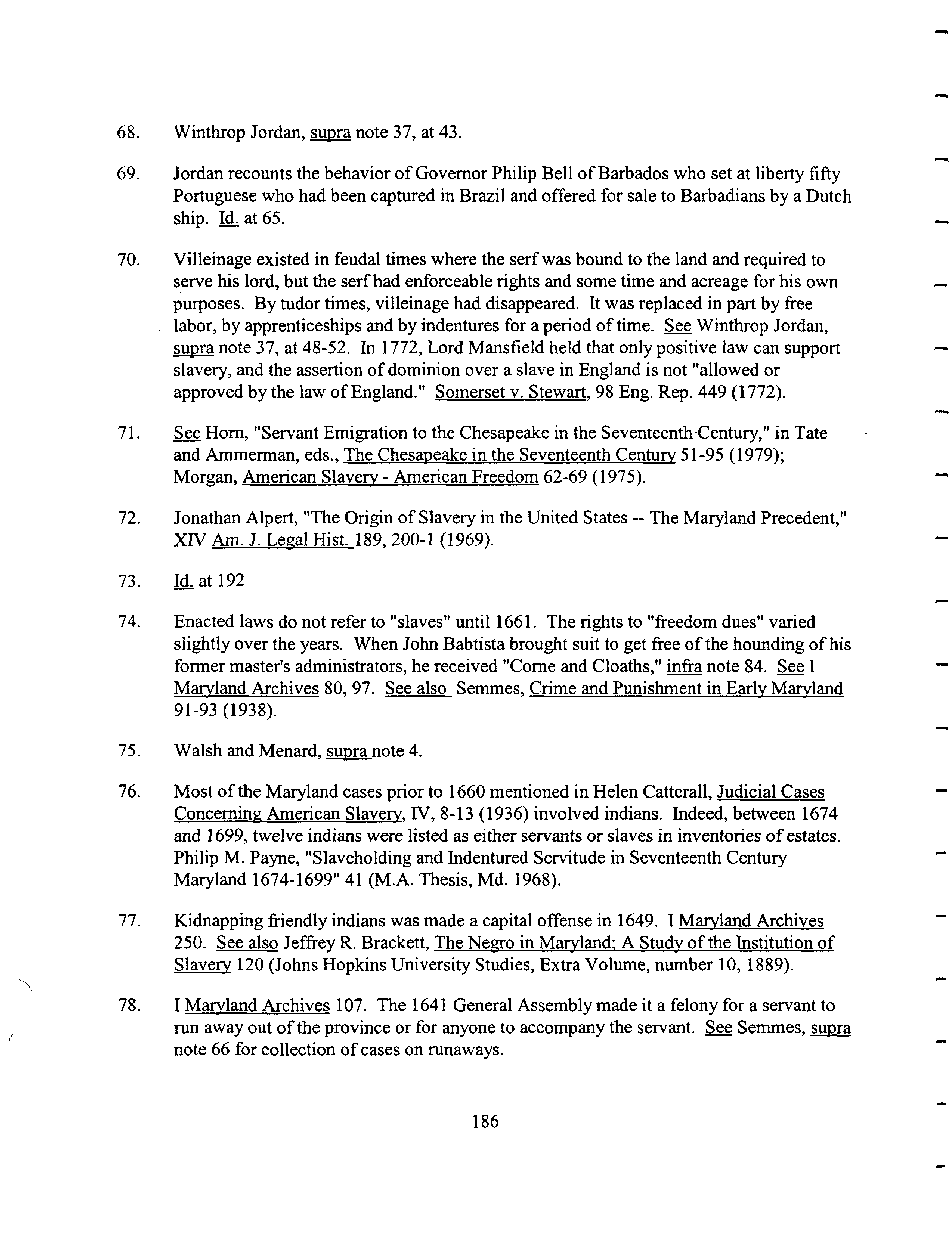|
68. Winthrop Jordan, supra note 37, at 43.
69. Jordan recounts the behavior of Governor Philip Bell of Barbados who set at liberty fifty
Portuguese who had been captured in Brazil and offered for sale to Barbadians by a Dutch
ship. Id. at 65.
70. Villeinage existed in feudal times where the serf was bound to the land and required to
serve his lord, but the serf had enforceable rights and some time and acreage for his own
purposes. By tudor times, villeinage had disappeared. It was replaced in part by free
. labor, by apprenticeships and by indentures for a period of time. See Winthrop Jordan,
supra note 37, at 48-52. In 1772, Lord Mansfield held that only positive law can support
slavery, and the assertion of dominion over a slave in England is not "allowed or
approved by the law of England." Somerset v. Stewart. 98 Eng. Rep. 449 (1772).
71. See Horn, "Servant Emigration to the Chesapeake in the Seventeenth-Century," in Tate
and Ammerman, eds., The Chesapeake in the Seventeenth Century 51-95 (1979);
Morgan, American Slavery - American Freedom 62-69 (1975).
72. Jonathan Alpert, "The Origin of Slavery in the United States — The Maryland Precedent,"
XIV Am. J. Legal Hist. 189. 200-1 (1969).
73. Id at 192
74. Enacted laws do not refer to "slaves" until 1661. The rights to "freedom dues" varied
slightly over the years. When John Babtista brought suit to get free of the hounding of his
former master's administrators, he received "Corne and Cloaths," infra note 84. See I
Maryland Archives 80, 97. See also Semmes, Crime and Punishment in Early Maryland
91-93 (1938).
75. Walsh and Menard. supra note 4.
76. Most of the Maryland cases prior to 1660 mentioned in Helen Catterall, Judicial Cases
Concerning American Slavery. IV, 8-13 (1936) involved indians. Indeed, between 1674
and 1699, twelve indians were listed as either servants or slaves in inventories of estates.
Philip M. Payne, "Slaveholding and Indentured Servitude in Seventeenth Century
Maryland 1674-1699" 41 (M.A. Thesis, Md. 1968).
77. Kidnapping friendly indians was made a capital offense in 1649. I Maryland Archives
250. See also Jeffrey R. Brackett, The Negro in Maryland; A Study of the Institution of
Slavery 120 (Johns Hopkins University Studies, Extra Volume, number 10, 1889).
78. I Maryland Archives 107. The 1641 General Assembly made it a felony for a servant to
run away out of the province or for anyone to accompany the servant. See Semmes, supra
note 66 for collection of cases on runaways.
186
�
|

